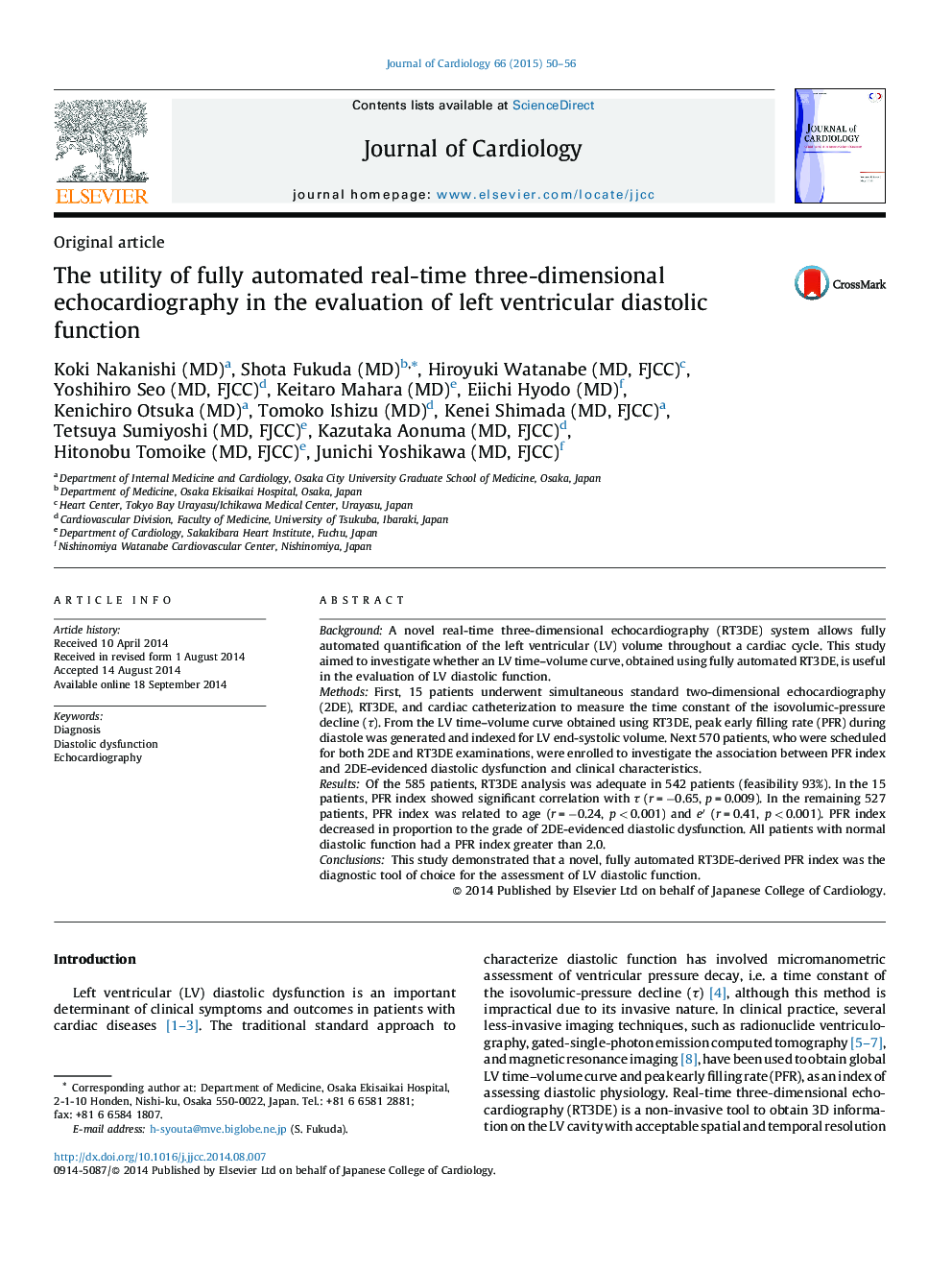| Article ID | Journal | Published Year | Pages | File Type |
|---|---|---|---|---|
| 2962807 | Journal of Cardiology | 2015 | 7 Pages |
BackgroundA novel real-time three-dimensional echocardiography (RT3DE) system allows fully automated quantification of the left ventricular (LV) volume throughout a cardiac cycle. This study aimed to investigate whether an LV time–volume curve, obtained using fully automated RT3DE, is useful in the evaluation of LV diastolic function.MethodsFirst, 15 patients underwent simultaneous standard two-dimensional echocardiography (2DE), RT3DE, and cardiac catheterization to measure the time constant of the isovolumic-pressure decline (τ). From the LV time–volume curve obtained using RT3DE, peak early filling rate (PFR) during diastole was generated and indexed for LV end-systolic volume. Next 570 patients, who were scheduled for both 2DE and RT3DE examinations, were enrolled to investigate the association between PFR index and 2DE-evidenced diastolic dysfunction and clinical characteristics.ResultsOf the 585 patients, RT3DE analysis was adequate in 542 patients (feasibility 93%). In the 15 patients, PFR index showed significant correlation with τ (r = −0.65, p = 0.009). In the remaining 527 patients, PFR index was related to age (r = −0.24, p < 0.001) and e′ (r = 0.41, p < 0.001). PFR index decreased in proportion to the grade of 2DE-evidenced diastolic dysfunction. All patients with normal diastolic function had a PFR index greater than 2.0.ConclusionsThis study demonstrated that a novel, fully automated RT3DE-derived PFR index was the diagnostic tool of choice for the assessment of LV diastolic function.
